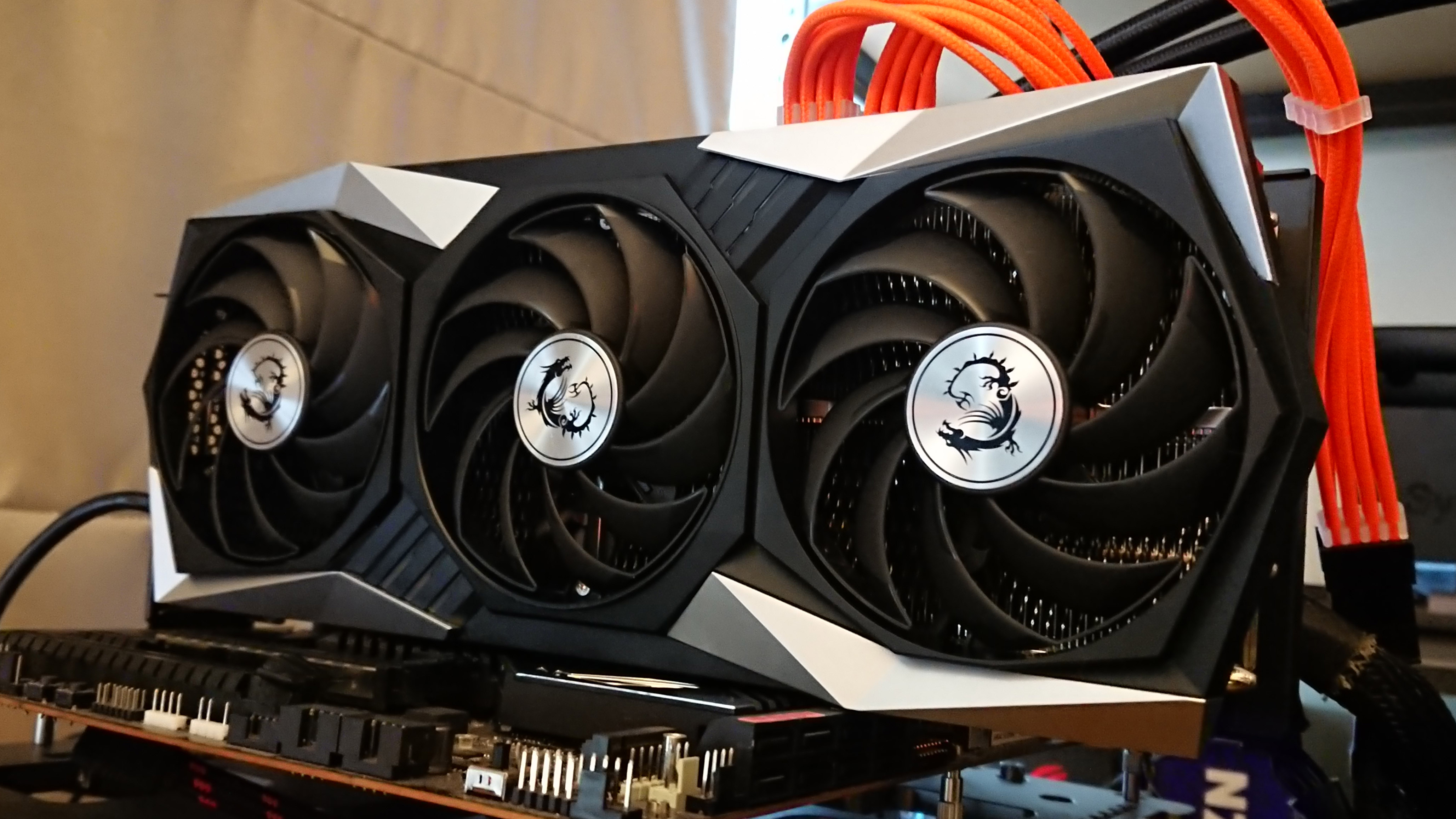Our Verdict
The MSI flavoured RX 6750 XT Gaming X Trio is an exceptionally cool running and quiet card, but the standard 6700 XT is better value—while it's still available that is.
For
- Exceptionally quiet
- Excellent thermal performance
- A solid option for 1440p gaming
Against
- Large price premium over an equivalent RX 6700 XT
- Significant increase in power consumption
PC Gamer's got your back
In a sign that AMD’s next generation of GPUs are still many months away from release, it's time for a refresh! Much like the RX 6650 XT and RX 6950 XT, the RX 6750 XT is a refresh of the existing Radeon RX 6700 XT. The RX 6700 XT has been around for just over a year, and since mid-range RDNA 3 cards are perhaps a year away, it makes sense for AMD to give its RDNA 2 range a mid-life tizzy up.
The idea is simple. Add some faster memory, increase the clocks and power budget a little, make a few firmware level tweaks, and voila, meet the RX 6750 XT. Its purpose is to compete with Nvidia’s GA104 models—the RTX 3060 Ti, RTX 3070, and to a lesser extent RTX 3070 Ti on its different GPU. At this tier, it needs to be capable of high frame rates at 1440p while offering competitive value for money.
The 6750 XT is built with the Navi 22 GPU. It packs 2560 shader units into a 7nm 17.2 billion transistor, 335 mm² die. It has 12GB of 18Gbps memory, which delivers a total of 432GB/s of bandwidth over a 192 bit bus. This compares to the 16Gbps and 384GB/s of the 6700 XT. It also includes 96MB of Infinity Cache.
Unlike the lower tier 6000 series cards, the 6700 XT includes a full PCIe 16x connection. The TDP of the card has been increased by 20W, from 230W to 250W.
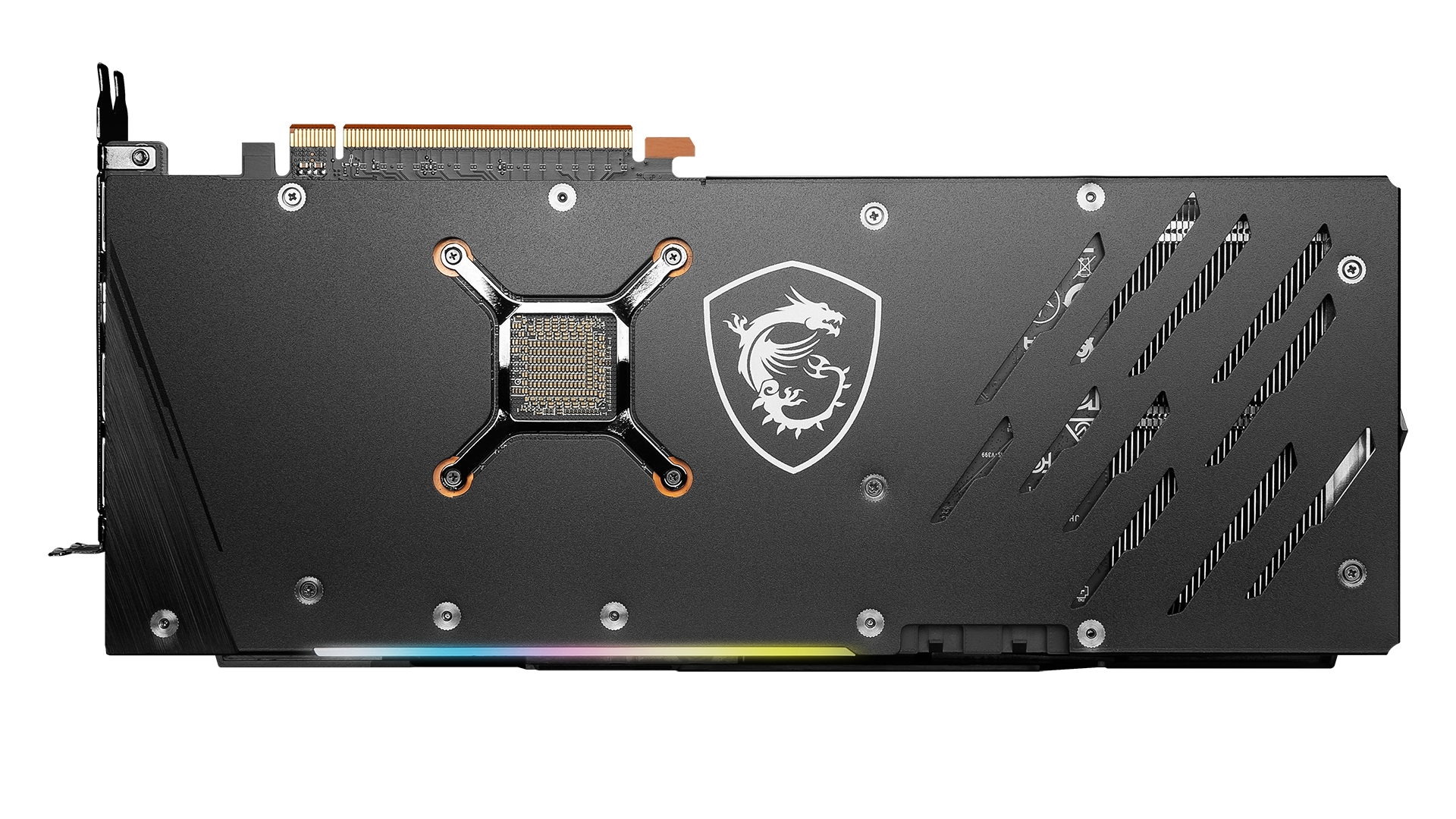
GPU: AMD Navi 22
Shader Units: 2,560
Boost clock speed: 2,623MHz
Memory capacity: 12GB GDDR6
Memory speed: 18Gbps
Outputs: 3x DisplayPort 1.4a, 1x HDMI 2.1
Power connectors: 2x 8-pin
Price: $599 | £629 | AU$1,059
I received MSI's RX 6750 XT Gaming X Trio for review. As the name suggests, the Trio features a large triple fan cooler. It's designed to handle higher TDP GPUs meaning the 6750 XT is well within its capabilities. The card is very well built, as we've come to expect from MSI. It's got a full length backplate and plenty of RGB bling.
It's also a big triple slot card. At 32cm long, its sheer size may rule it out of smaller builds, but all that surface area should keep the card running cool and quiet. It comes with a single HDMI 2.1 and triple DP 1.4a ports. Dual 8-pin power connectors deliver more than enough juice to power the card.
The MSI RX 6750 XT Gaming X Trio is powered by a 10-phase VRM with a further three for the Samsung 18Gbps memory. It's a strong design for this class of card. The cooler has thermal pads that cool the memory and VRM circuitry.
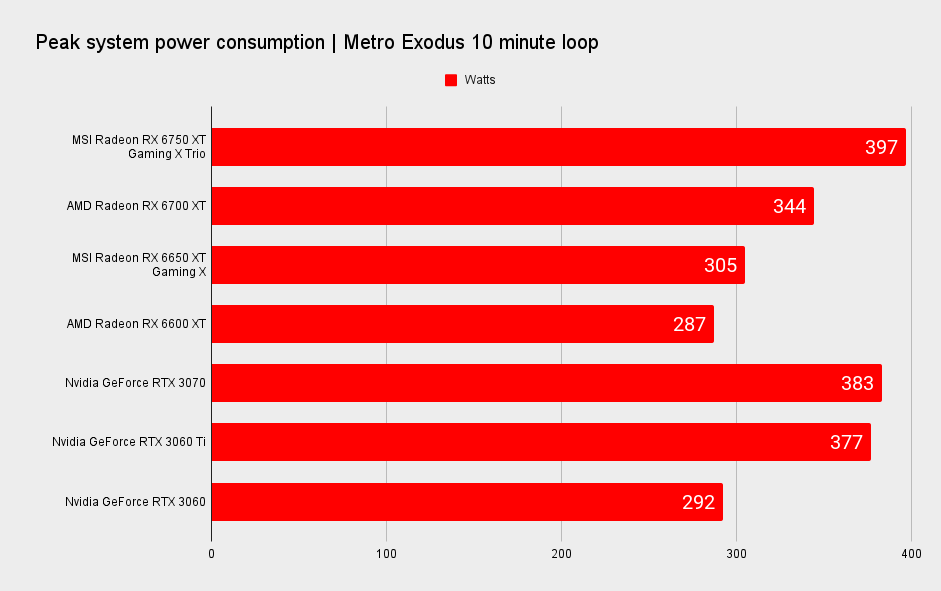
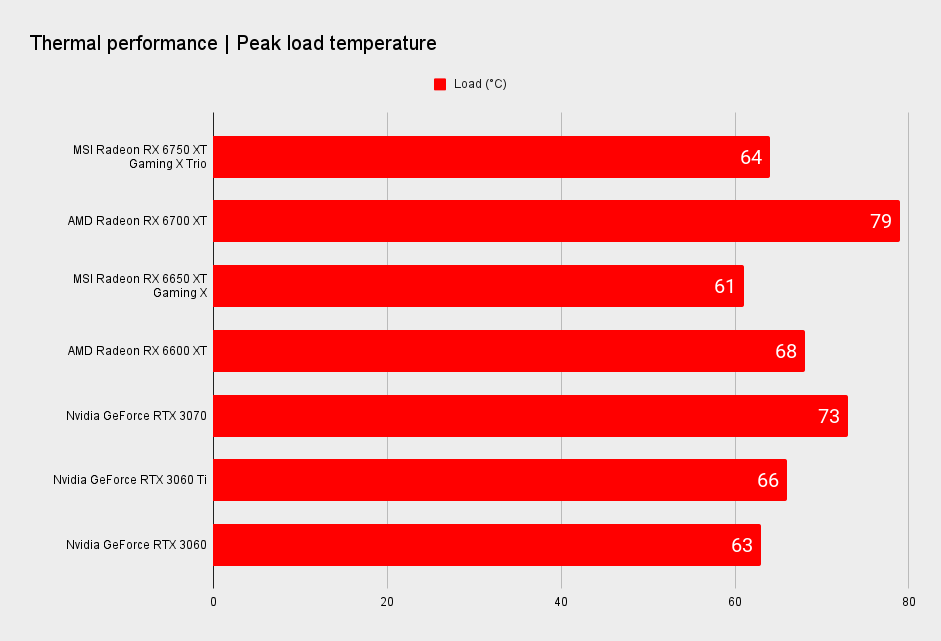
It's all but silent and a load temperature of just 64°C is outstanding for a 250W GPU
That big cooler performs very well. In fact, it's all but silent and a load temperature of just 64°C is outstanding for a 250W GPU. It's some 15°C cooler than AMD's reference RX 6700 XT, despite its higher TDP and clocks. It's a lot quieter too, and honestly couldn't be heard over the sound of my AIO pump and fans.
The MSI comes with a rated boost clock of 2,623MHz, yet during my testing, the card was able to hold a clock of 2,695MHz. Well done MSI.

A weakness of the card is its rather steep power consumption relative to the RX 6700 XT. During a test to measure peak power consumption for the whole system, the MSI returned a peak reading of 397W, an increase of over 50W from the reference 6700 XT. Some of that can be attributed to the extra fan and RGB lighting but that doesn’t explain the jump. AMD has clearly made the decision to push the Navi 22 silicon to its limits in order to extract every last megahurts. That’s a trait common to all 6750 XTs.
Synthetic gaming performance
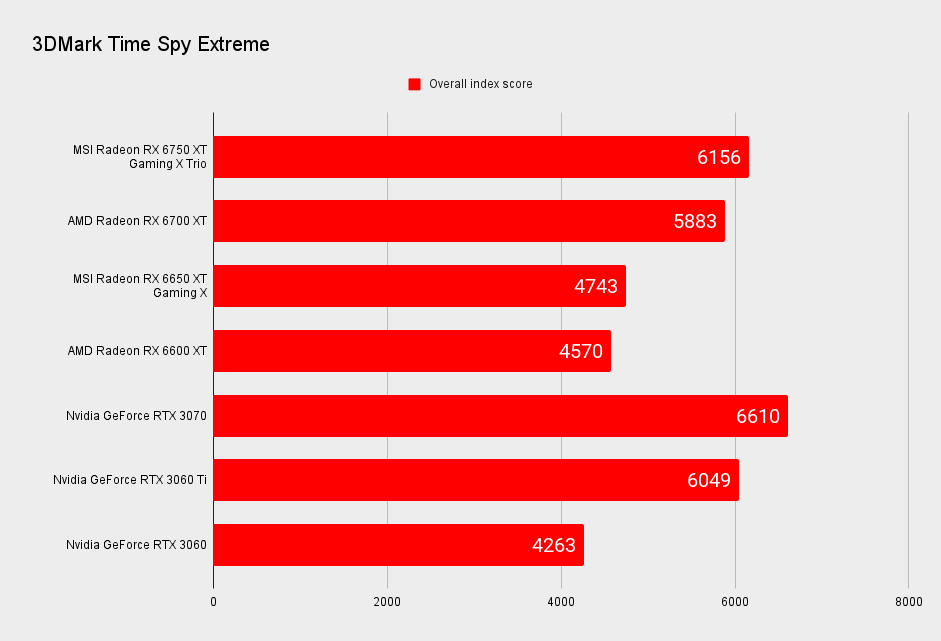
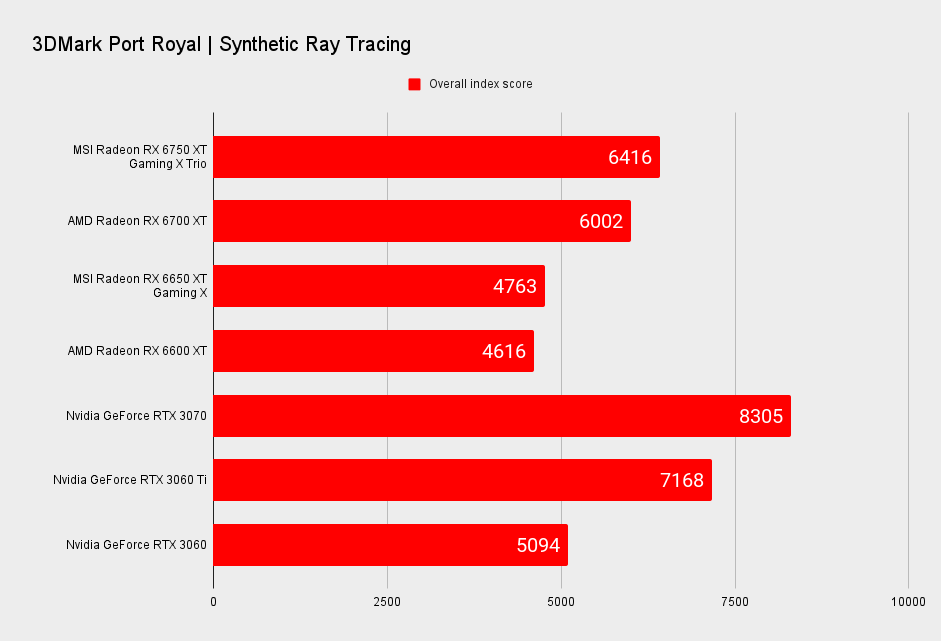
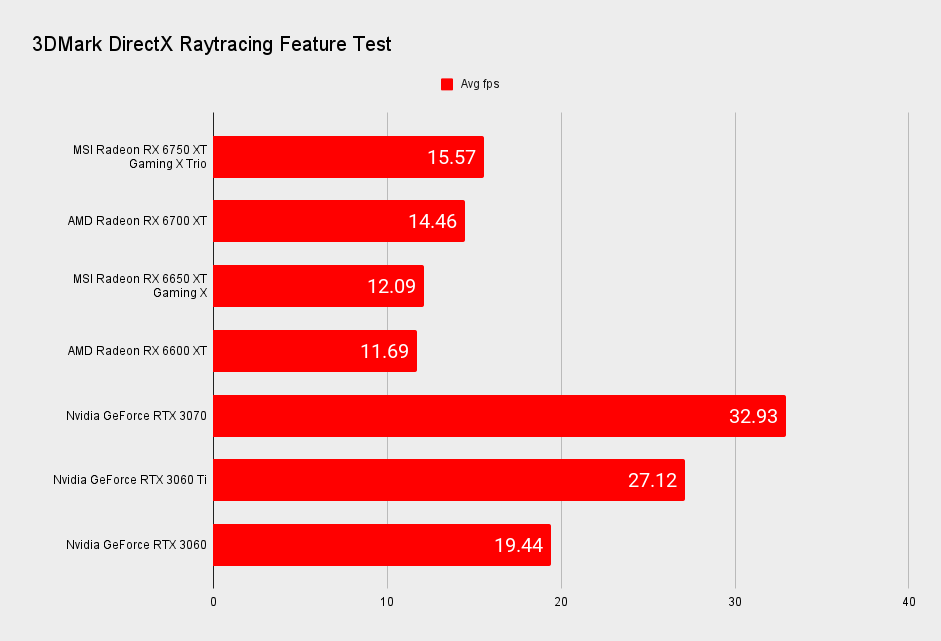
1080p Gaming Performance
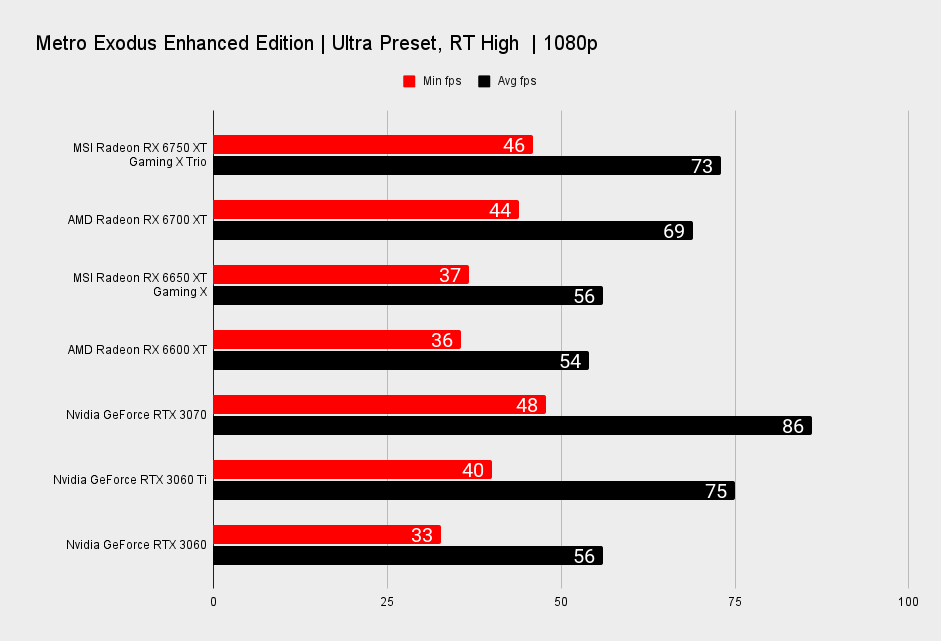
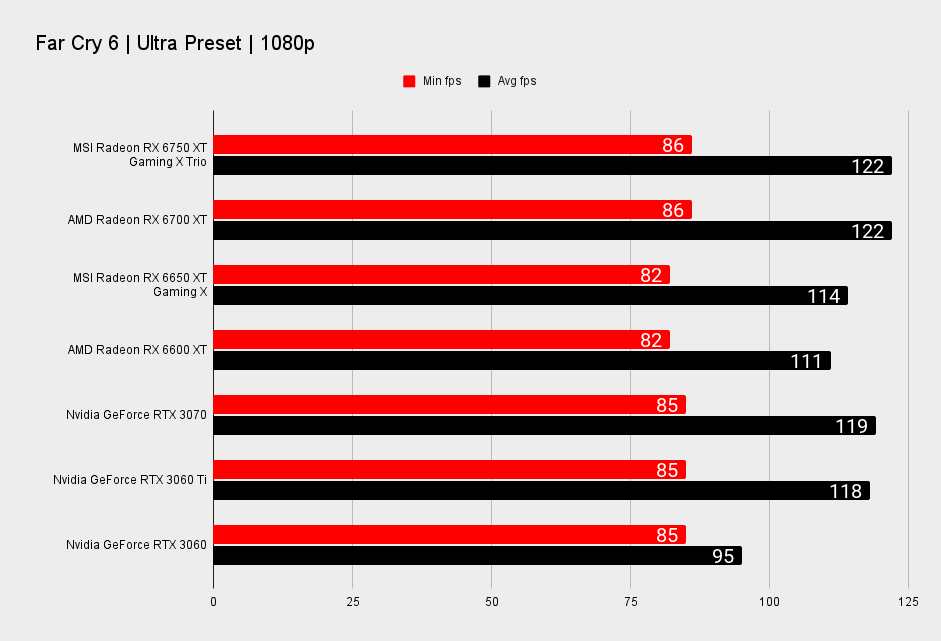
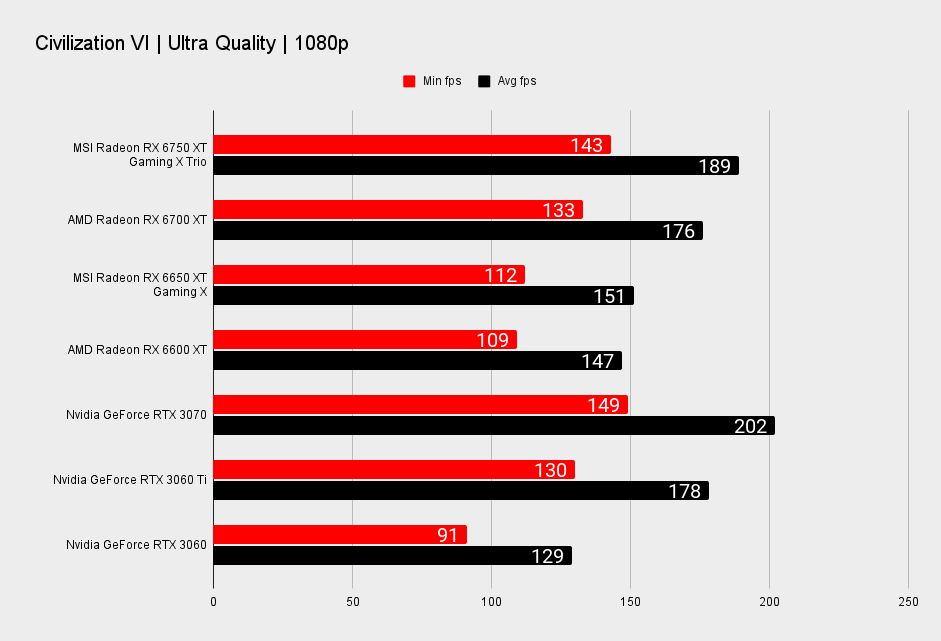
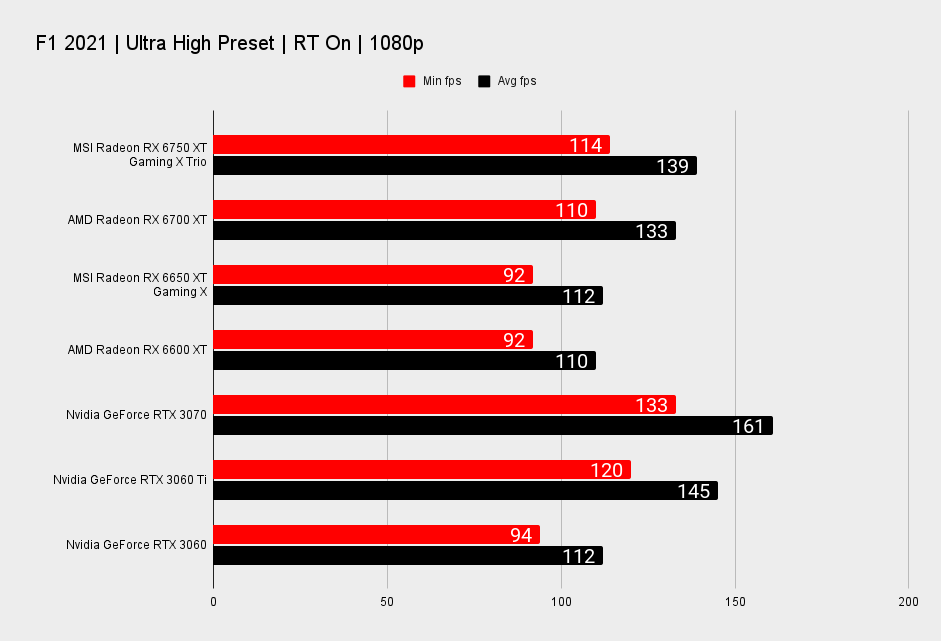
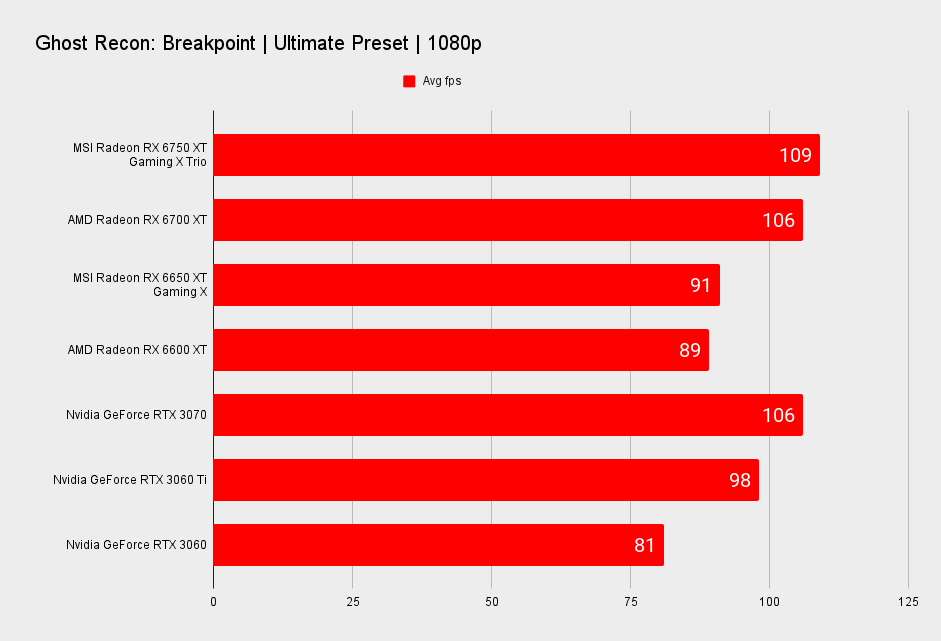
1440p Gaming Performance
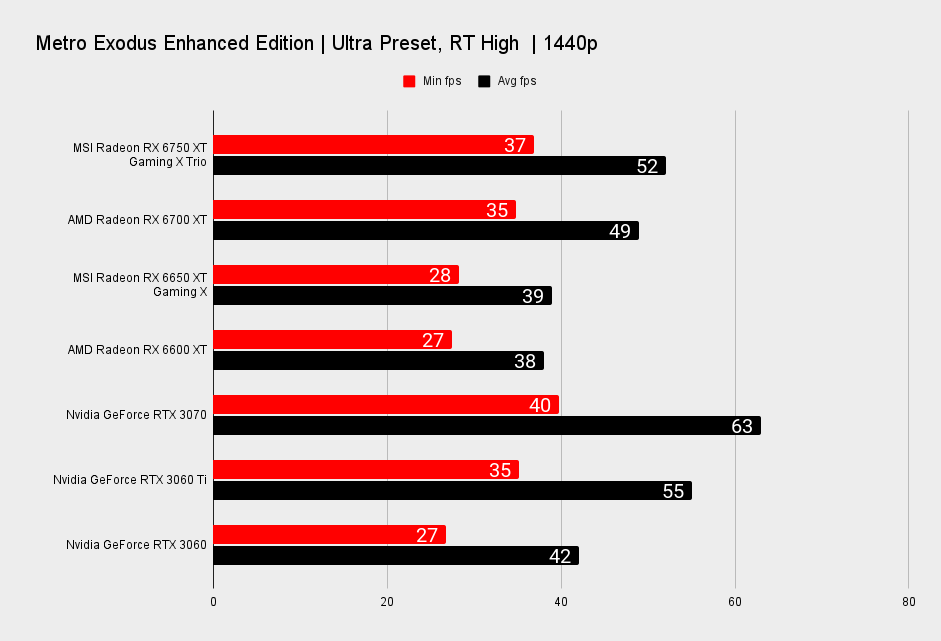
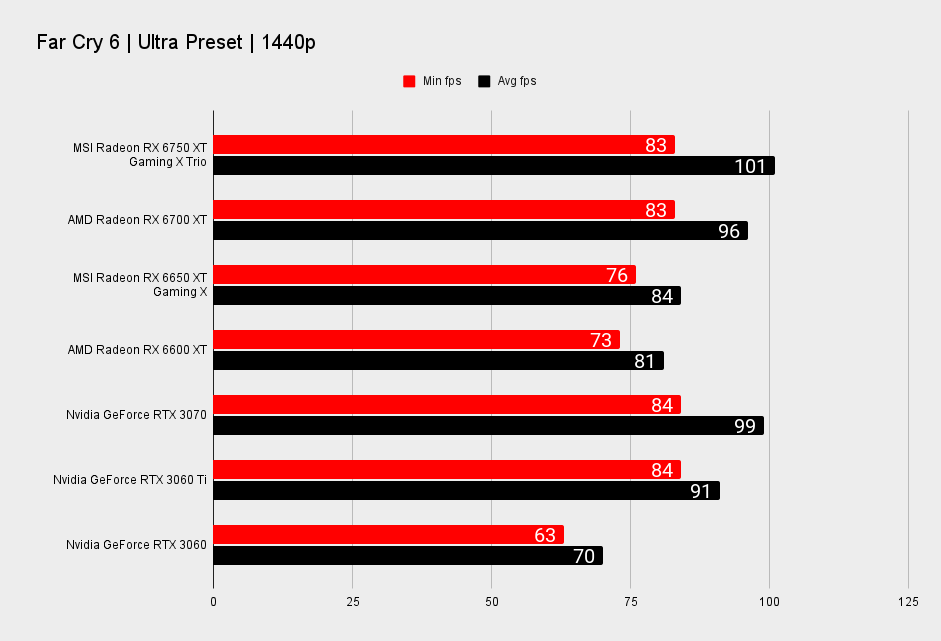
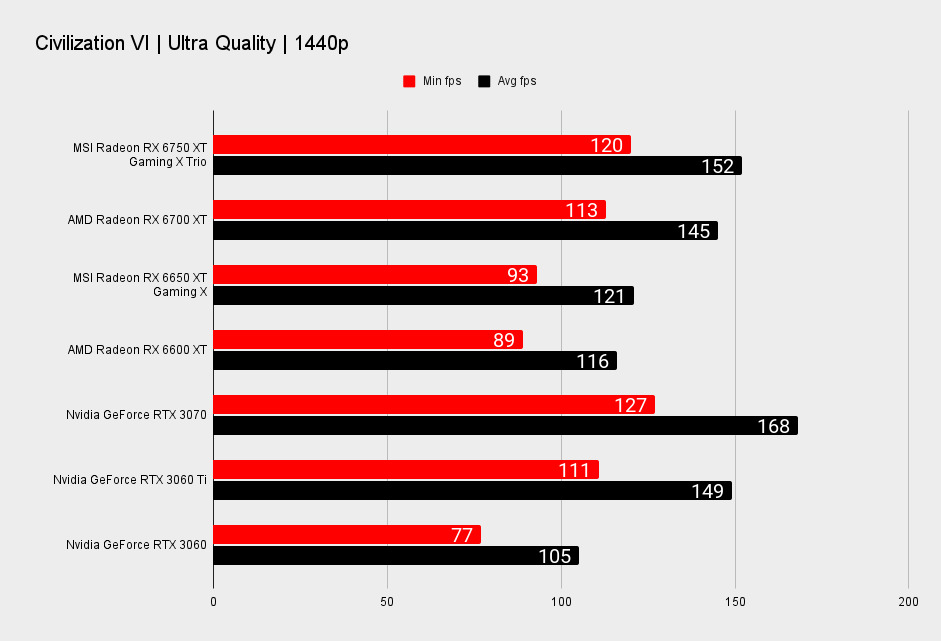
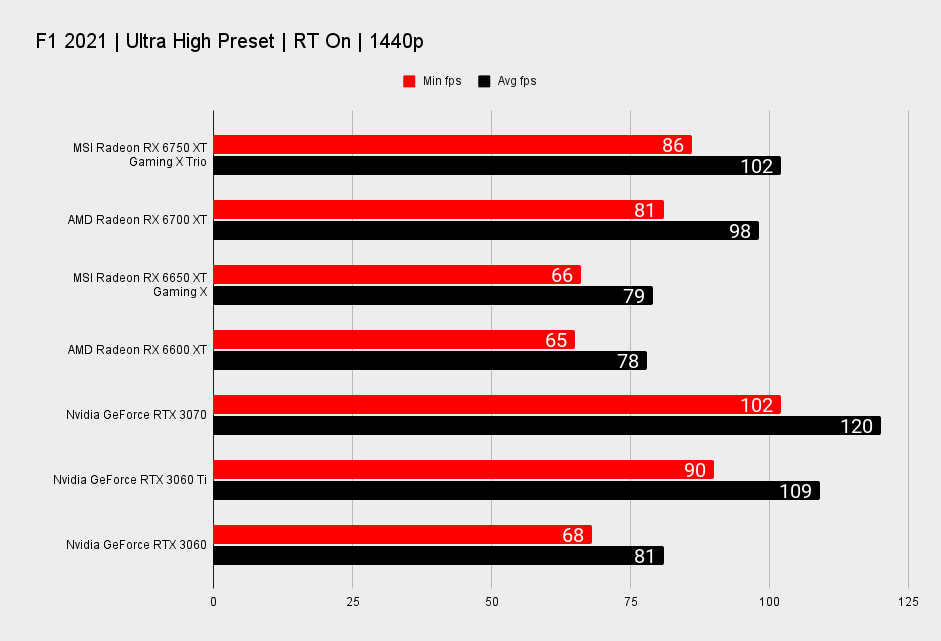
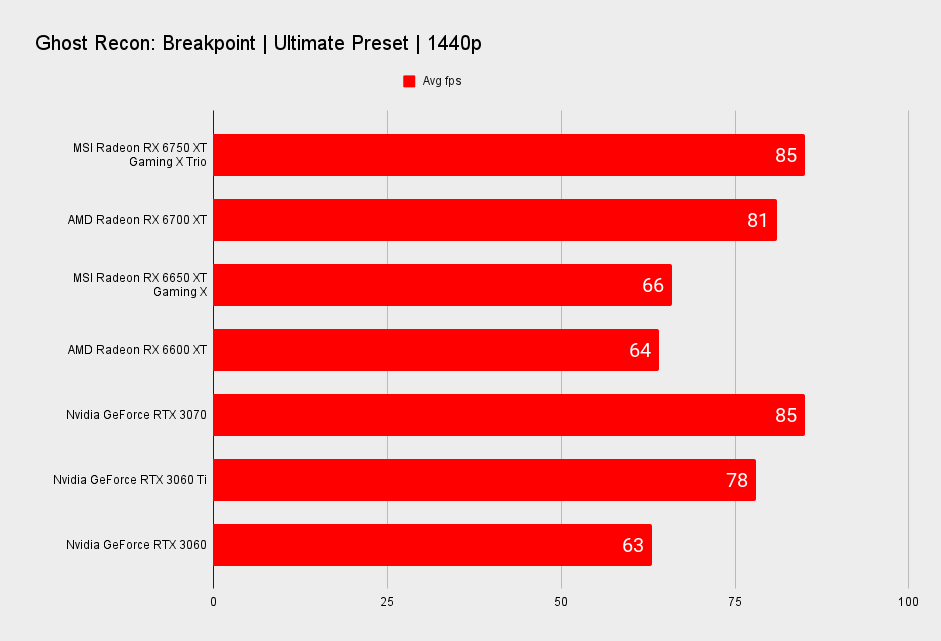
4K Gaming Performance
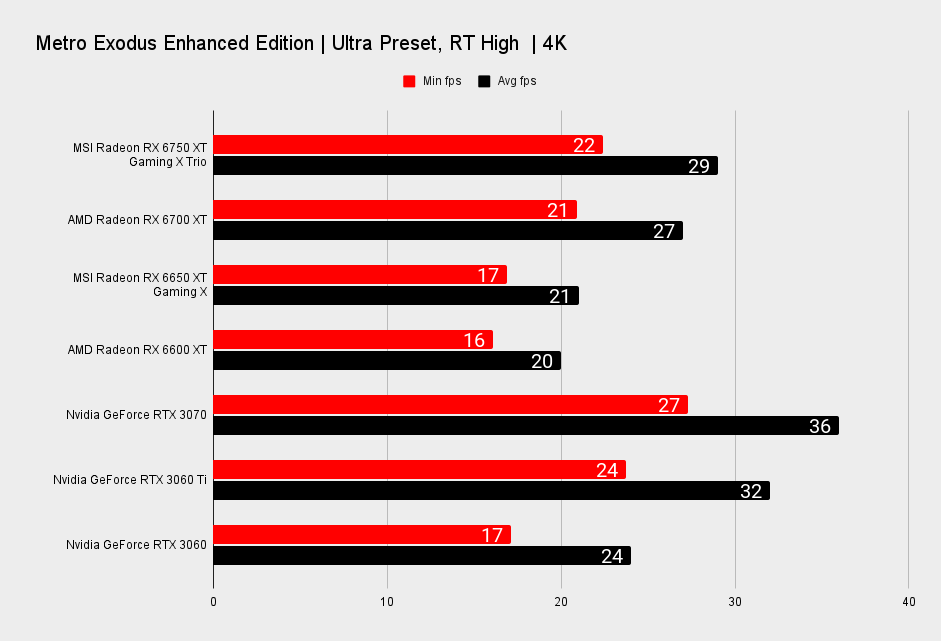
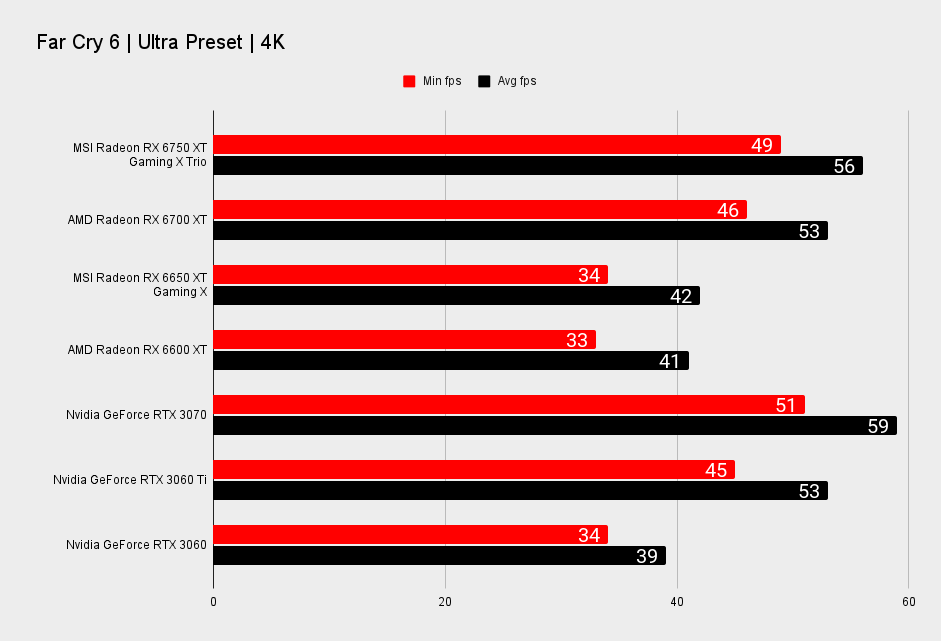
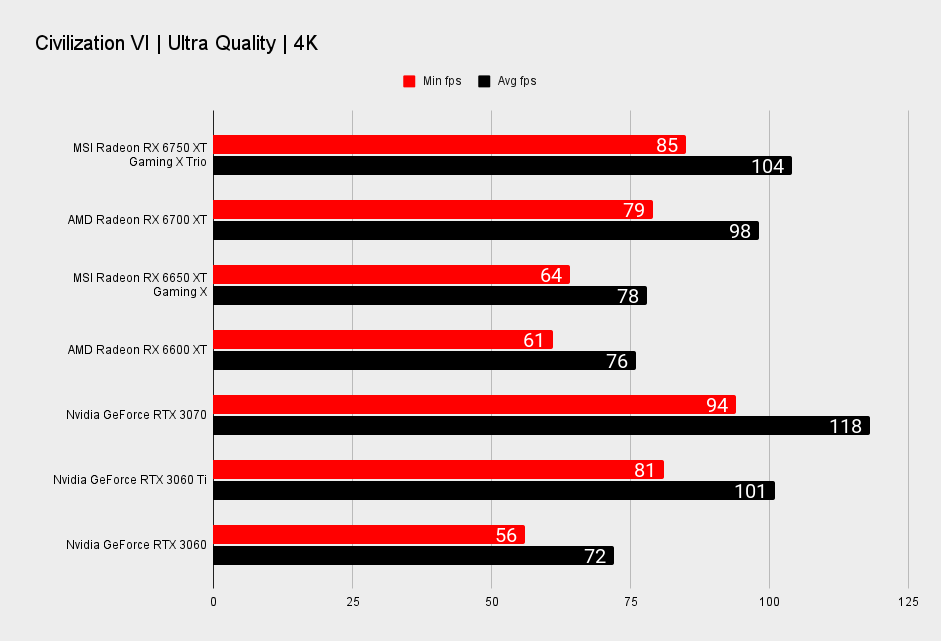
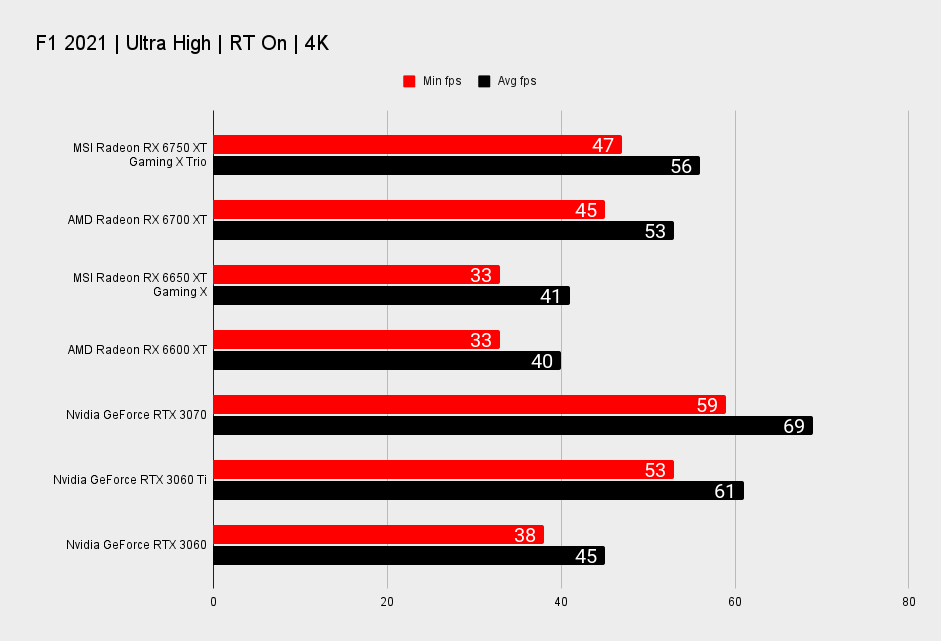
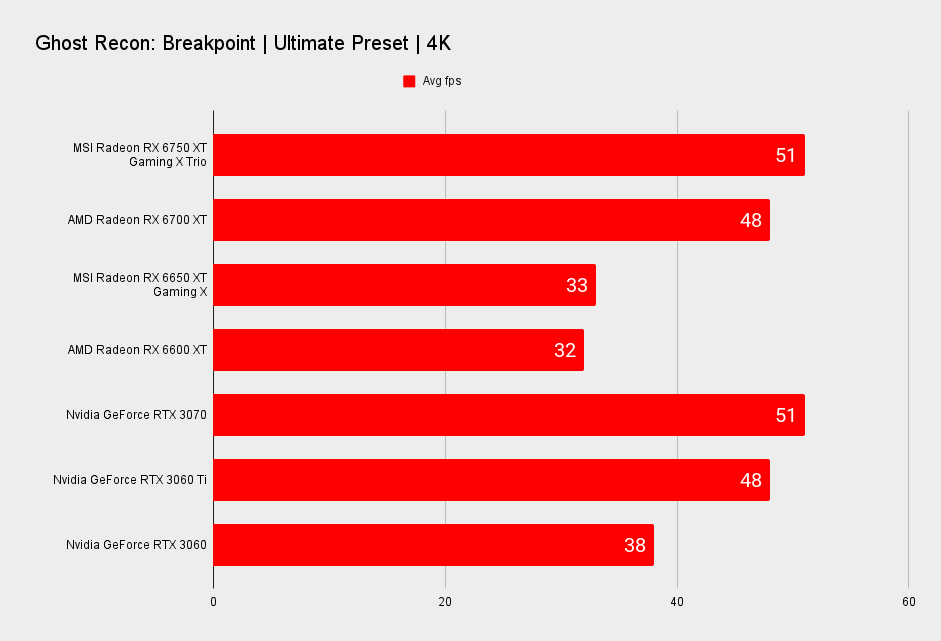
CPU: AMD Ryzen 7 5800X
Motherboard: Asus Crosshair VIII Dark Hero
RAM: 2x 8GB T-Force Xtreem ARGB DDR4-3600
Storage: 2TB Adata S70, 500GB Samsung 980 Pro
Cooling: NZXT X73 360mm AIO
PSU: Corsair AX1000
When it comes to performance, the RX 6750 XT performs at a level you'd expect from an overclocked RX 6700 XT. That’s not a bad thing as the 6700 XT isn’t exactly a slouch. It will deliver high frame rates at 1080p, and will play any game you can think of at 1440p, especially if you enable FSR 2.0. It’s well worth enabling it where possible.
When compared to the RTX 3070, the card performs well, though in a game like Metro Exodus Enhanced Edition, or any game that makes use of ray traced effects, the capabilities of the RTX 3070 come to the fore.
Which of the two you go for may come down to the games you play. If you favor ray tracing, the RTX 3070 remains a very strong option, particularly as its pricing continues to fall. And therein lies the problem for the RX 6750 XT. Price.
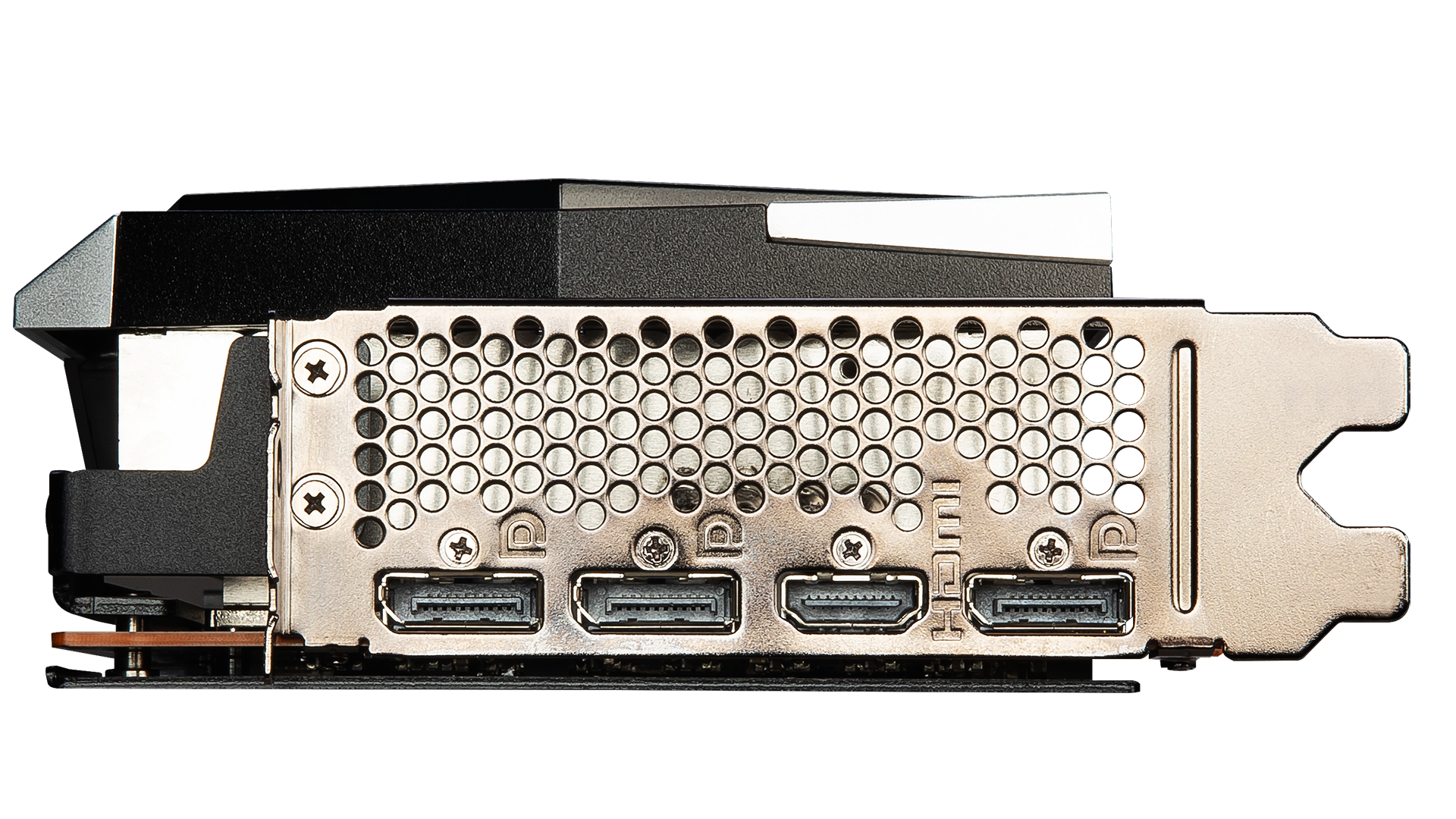
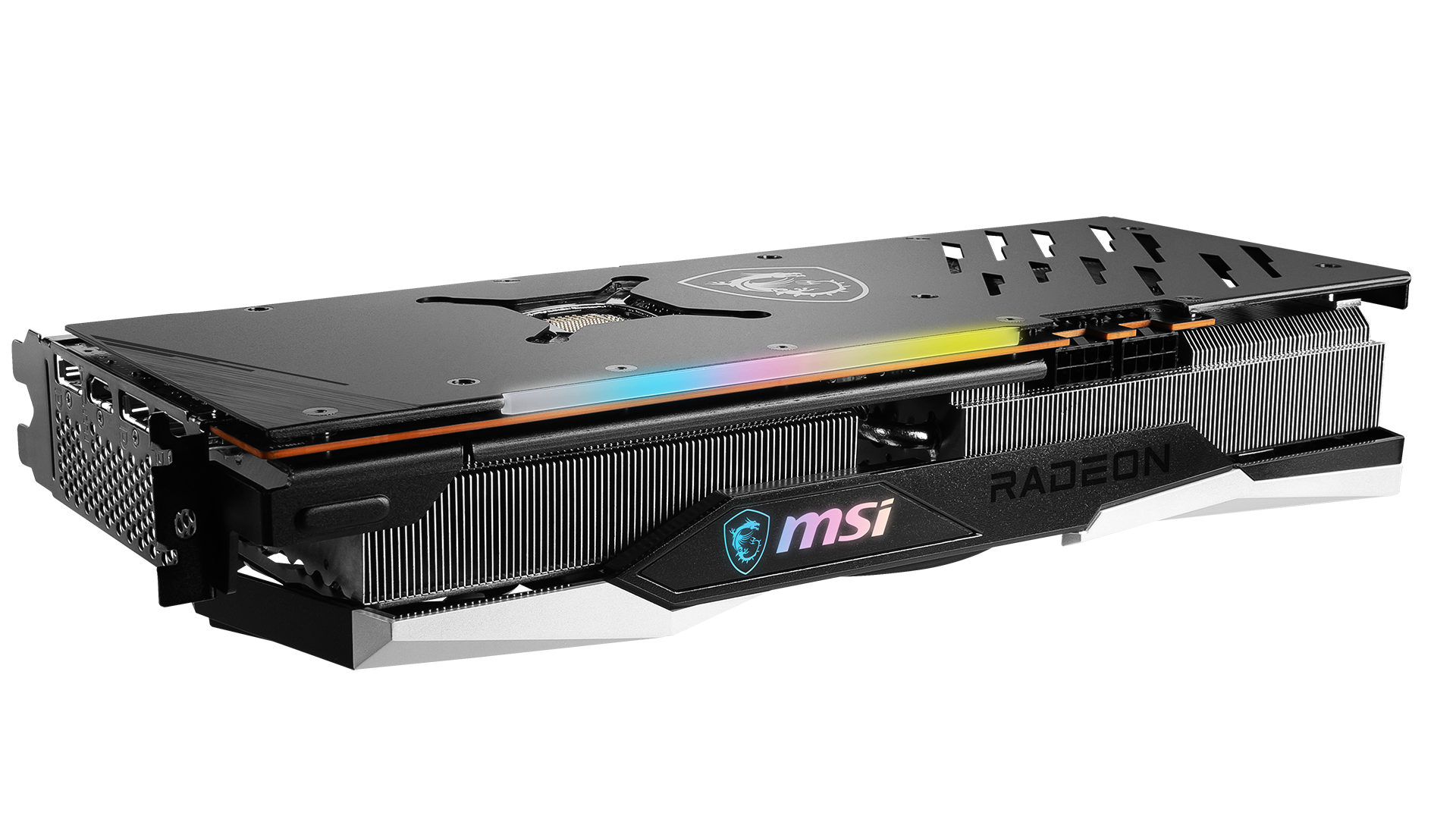

The price is the weakness of the RX 6750 XT, and MSI itself can only do so much. At $599 (£679 / AU$1,059), it's simply too expensive relative to the RX 6700 XT. In some markets it even costs more than a mid-range RTX 3070.
The MSI RX 6750 XT is exceptionally well built, quiet and cool, as we've come to expect from MSI's Gaming cards. But right now, AMD is simply asking too much for it compared to the outgoing RX 6700 XT. Its price needs to fall if it is to become a compelling upper mid range option.
The Radeon RX 6750 XT is a highly capable 1440p card but the same can be said of the year old RX 6700 XT. As stock levels improve and the card drops to RX 6700 XT-like pricing, the RX 6750 XT should become an entirely different proposition. But until it drops to that sub $500 range—or under £600/AU$900—then its a tough sell in an increasingly competitive market, one that actually now has stock on the shelves.
The MSI flavoured RX 6750 XT Gaming X Trio is an exceptionally cool running and quiet card, but the standard 6700 XT is better value—while it's still available that is.

Chris' gaming experiences go back to the mid-nineties when he conned his parents into buying an 'educational PC' that was conveniently overpowered to play Doom and Tie Fighter. He developed a love of extreme overclocking that destroyed his savings despite the cheaper hardware on offer via his job at a PC store. To afford more LN2 he began moonlighting as a reviewer for VR-Zone before jumping the fence to work for MSI Australia. Since then, he's gone back to journalism, enthusiastically reviewing the latest and greatest components for PC & Tech Authority, PC Powerplay and currently Australian Personal Computer magazine and PC Gamer. Chris still puts far too many hours into Borderlands 3, always striving to become a more efficient killer.
